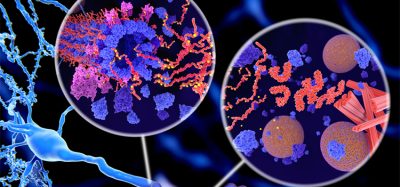Researchers identify enzyme critical for regulating cell signalling
Posted: 6 March 2020 | Victoria Rees (Drug Target Review) | No comments yet
An enzyme that adds a cell-signalling code to proteins has been identified by researchers, who say their discovery could aid in the development of cancer therapies.


New research has identified an enzyme that adds lysine myristoylation (a code used for cell signalling) to a key protein, which the scientists say could enable artificial chemical regulation of cell signalling. They say this could lead to practical applications in treating human diseases such as slowing the growth of cancerous cells and inhibiting viral infections.
The enzyme, known as N-terminal glycine myristoyltransferases (NMT) 1 and 2, was discovered by researchers at Cornell University, US. The team report the mechanism of adding and removing the lysine myristoylation code to the signalling protein ADP-ribosylation factor 6 (ARF6).
“The modification we discovered occurs to many proteins that are important for cell signalling… This is also the first time this kind of enzymatic activity has been identified in mammals,” said Hening Lin, professor of chemistry and chemical biology in the College of Arts and Sciences at Cornell.
The biochemical mechanisms ordered by these enzymes give proteins directions for moving through different subcellular locations in the most efficient way, Lin said. Without the proper chemical code, a protein might travel through the cell inefficiently or incorrectly.
“In our cells, there are certain proteins, such as ARF6, which need to go from A to B to C, then back to A, because that’s what’s required for transporting other proteins in a cycle,” Lin said. “That’s what we found – the mechanism that makes sure the protein ARF6 follows that path.”
The researchers revealed that this cell-signalling mechanism takes place in human cells of many kinds – they believe that all mammalian cells operate in a similar way.
The biochemical mechanisms ordered by these enzymes give proteins directions for moving through different subcellular locations”
In addition to telling ARF6 where to go, NMT1 and NMT2 also help to activate the protein. This provides a new way to regulate it, which will in turn allow scientists to control the protein, leading to possible medical applications, said Tatsiana Kosciuk, doctoral student in biochemistry and lead author of the study. Since some cancer cells cycle at a high rate, slowing that cycle through drug inhibitors may slow cancer cell growth.
“This could be a potential therapeutic strategy,” said Kosciuk. “If we target one of these enzymes, we can control the activity of this very important protein that is implicated in a variety of diseases.”
There is also evidence that NMT could modify other proteins in a similar way, hinting at other potential applications of targeting this chemical modification, suggest the researchers. “There are numerous disease implications in this cell-signalling finding,” Kosciuk said. “We’re still working on it, but it looks promising.”
The study was published in Nature Communications.
Related topics
Drug Targets, Enzymes, Protein, Protein Expression, Proteomics
Related conditions
Cancer
Related organisations
Cornell University
Related people
Hening Lin, Tatsiana Kosciuk








